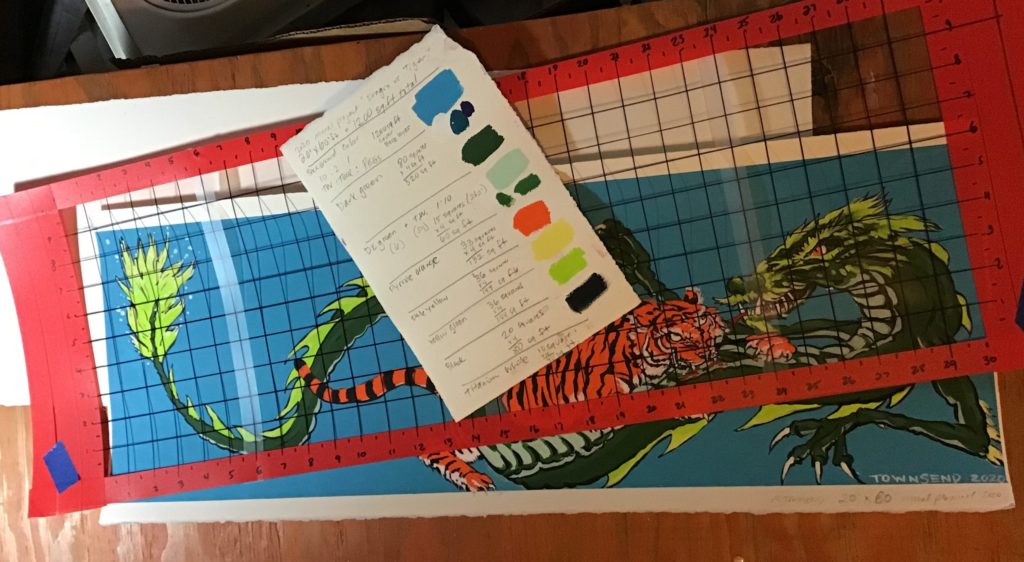
Introduction
The creation of a mural should begin long before ladders, scaffolding, and cherry-pickers are on site. Although we have amassed extensive information about mural painting, the conversation about how to go about estimating products could use some expansion. When preparing to paint a mural, the creation of a maquette helps ensure the appropriate amount of paint and other supplies are at the ready. We will use this tool to calculate how much paint to have on hand for a given mural.
Most commercially available products are sold in quarts and gallons at various locations and are relatively easy to pick up more if you run out. However, large containers of artist paints are not so easy to procure and this runs the risk of costly delays in project completion.
On the other hand, you do not want to buy too much paint, either. Overestimating paint amounts eats directly into your budget, including the artist’s profit margin! So how does one accurately approximate paint amounts?
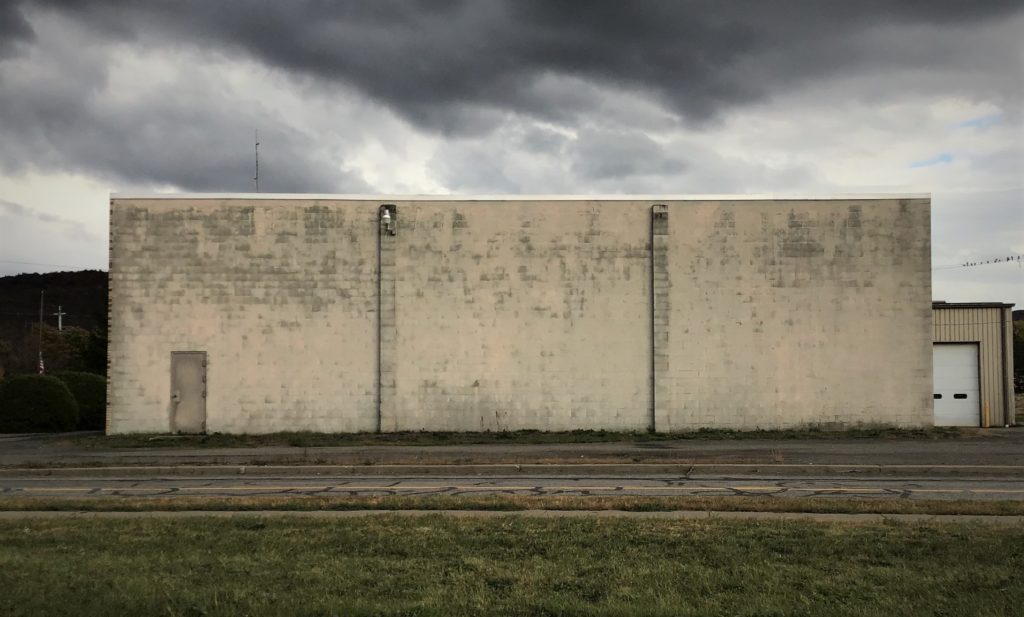
Enter: The “Maquette”

The French word “Maquette” translates as “scale model”. It is created during the conceptual phase of a work of art to aid in image design and in turn, used to obtain client approval for a proposed mural. This to-scale reference further aids with paint estimation. A common scale ratio for a modest project would be 1 square inch on the maquette represents 1 square foot on the wall. This ratio is changed as needed for larger works. A maquette does not need to be highly detailed to be effective.
Although a computer rendering can facilitate this process, a hand-painted rendering increases the accuracy of estimated paint amounts. Some of the colors will be the paint right out of the container and some will be blends. Therefore, when you create blends, try to keep the mixing ratio on hand and written down. When we get to adding up all of the base colors, this will be important information. For example, you might make a light sky blue, a light pastel green, and a light cloud gray. Colors such as these are mostly Titanium White and the base colors around 5 to 15% of the mixture. If you have not checked it out yet, try the GOLDEN Virtual Paint MXR to get your ratios set, even if you mix by eye. There’s even a way to select just the recommended exterior colors as your palette.
The Grid
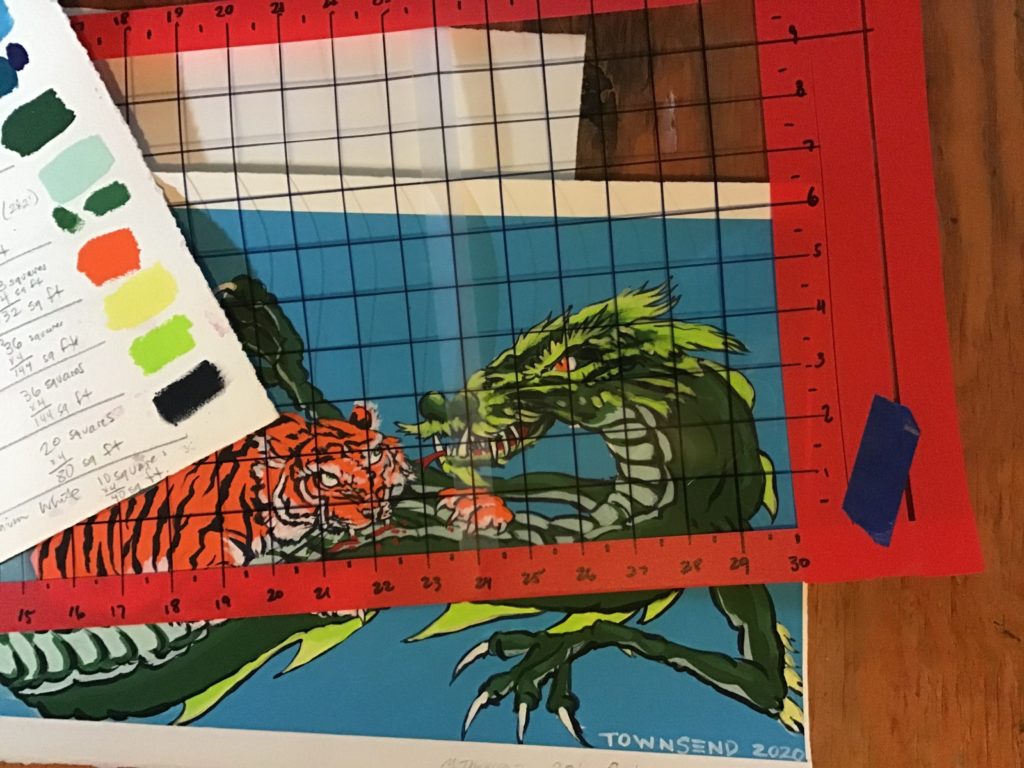
The concept of gridding a design to change scale is often taught in art classes to create coordinates. While this certainly is useful when deciding on a layout for a mural, gridding additionally serves to tally up the amounts of paint needed. You can draw the scale directly over the painting, but my preference is to use a mylar sheet to create the grid. This can be important if there are last minute changes to the design and you can also reuse the grid overlays for future projects. For this project, we made our grid at a scale of 1/2″ = 2′.
Add It Up
Now we are ready to figure out our paint amounts. Squares of the same (or similar) color are counted and tallied. For a simple design, you may list the color names as “Sky Blue”, or “Portrait Purple”. Larger, and more complex designs may require identification of zones, such as “Light Sky Blue”, “Mid Sky Blue” and “Deep Space Blue”. You can draw zones directly on the maquette or create an additional mylar overlay to define color spaces.
The whole squares are easy, but if you have a bunch of partial squares, just try to add them up as best as you can (within reason). When in doubt, round up! If you are concerned with your accuracy level, you can add up the square feet of all the colors together and compare it to the actual mural wall space. Note: When it comes to colors that you only use sparingly, do not overthink the amounts. Bear in mind that on average, an ounce of artist paint should cover between 2 to 3 square feet, one coat!
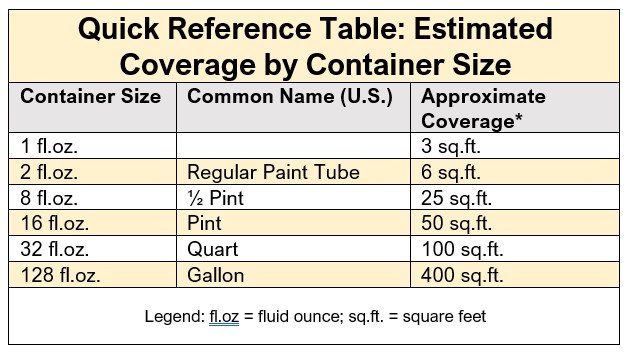
On the below worksheet, I have defined the key color fields, counted the squares (defined the square footage) of each, and broken down the mixtures into columns. It may seem a bit complex, but it is easy to get the hang of the process after doing it once or twice.
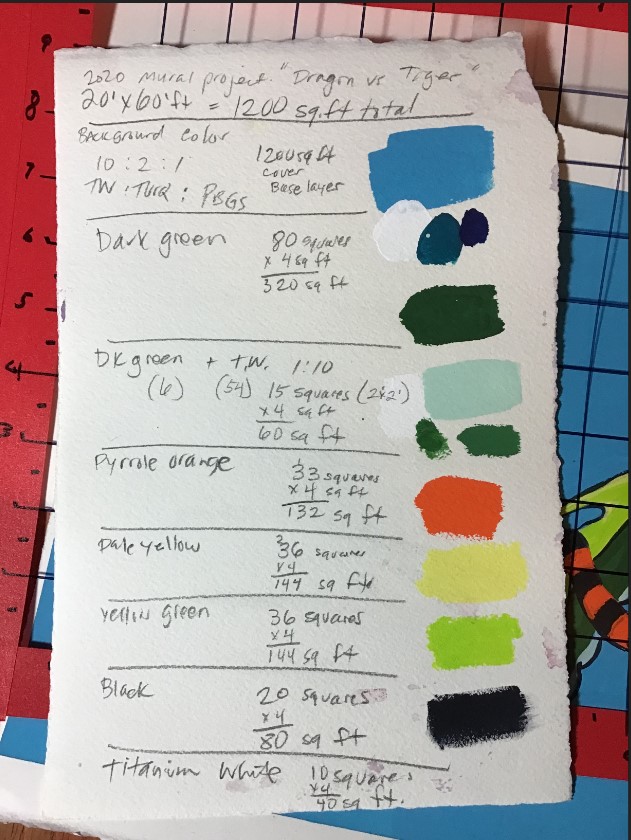
More about Product Coverage Estimation
Please keep in mind that texture, surface absorbency, product thickness, and application method can all factor into actual product coverage.
As always, if you have any questions, please contact us at [email protected], 1-800-959-6543 1-607-847-6154 (North America); or [email protected], 0049-69-348-72154 (Europe).
